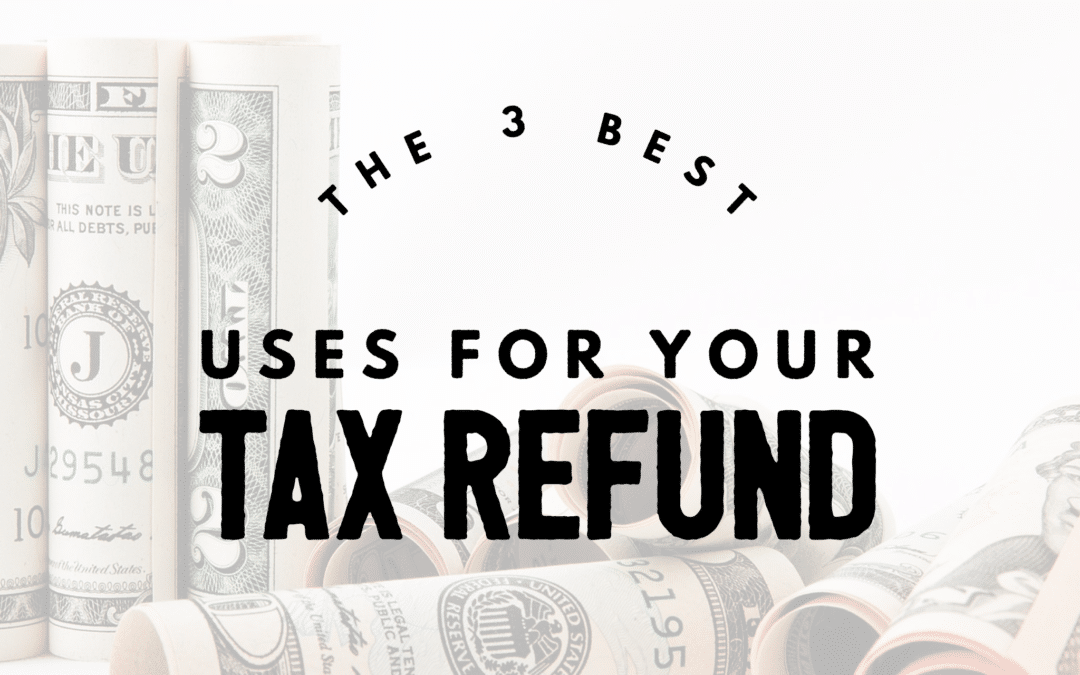According to the IRS, U.S. taxpayers received $264.5 billion in total refunds in 2016. That makes the average refund total about $2,993.
That may feel like nearly $3,000 of “extra” money, but keep in mind a refund is what you overpaid to Uncle Sam during the last tax year. It’s your money you earned, so it benefits you to make the most of it (even when it feels like unexpected cash).
Windfalls like a tax refund provide some of the best opportunities to make permanent improvements to your finances. Here are 3 ways to put your refund to the best use.
1. Contribute to Your Emergency Fund
According to Bankrate, 57% of Americans don’t have enough cash to cover an unexpected expense of $500. When you’re faced with an unpleasant surprise like a medical bill, car repair, or job loss, do you turn to credit card debt that carries a high interest? Do you dip into your 401(k)? Do you have to take out an additional loan on your home?
If you dip into savings during tough economic times, that can mean selling assets from your nest egg when the market is down or, alternatively, spending cash that could otherwise buy assets in your portfolio on the cheap. Any of these steps will set you back in growing your net worth and hinder your ability to reach your goals.
You can avoid these scenarios by creating emergency savings. An emergency fund allows you to avoid taking on expensive credit card debt or tapping into retirement funds when unplanned for costs arises.
An emergency fund should contain 6 to 12 months’ worth of living expenses. Within that range, the specific size of your emergency fund should correspond with your level of job security and the potential volatility of your income.
Doctors and tenured professors have incomes that are more predictable and typically don’t need as big of an emergency fund. Someone who works in construction, is a freelancer, or is in any other industry that tends to fluctuate with the economy, on the other hand, may want to maintain a bigger emergency fund.
6 to 12 months of living expenses is a lot to set aside in cash, but don’t let that overwhelm you and prevent you from getting started. An emergency fund is rarely built overnight (and it doesn’t have to be!). If you start from scratch, contribute a very manageable sum to a designated savings account every pay period and make it an automated piece of your financial plan.
2. Save For Retirement
The importance of retirement saving has never been greater. Life expectancy is longer than ever, so assets must support a longer retirement. Health care costs are much higher than in the past and are growing much faster than the overall rate of inflation, too. On top of all this, interest rates have fallen to the point where retirement assets are producing less income in retirement than in previous decades.
In addition to the need for greater asset accumulation, defined benefit plans that supported retirees in the 1980s and 1990s have been replaced by defined contribution plans that shift the burden of saving and investing to individuals. Although defined contribution plans such as 401(k)s allow people to accumulate significant balances over time, most people fail to contribute as much as they should.
If you have a good 401(k) plan, then you can use your tax refund to make an extra one-time contribution. The contribution would come directly from your paycheck, so you’d want to deposit the tax refund in your checking account to make up for that one-time smaller pay period and cover your normal expenses at that time.
Alternatively, you can contribute to a Traditional or Roth IRA. If you’re under the age of 50, you can contribute up to $5,500 to an IRA. If you’re over the age of 50, the maximum contribution is $6,500. (Whether you qualify for a Roth IRA, deductible IRA, or nondeductible IRA depends on your income.)
If you didn’t contribute to an IRA in 2016, you have until April 17th to make last year’s contribution with your tax refund. Otherwise, you can allocate your refund toward 2017’s contribution limits.
3. Pay Down Debt
Paying down debt is less exciting than building an emergency fund or saving for retirement because you don’t get to see an immediate increase in your assets, but there are instances when paying down debt can provide a greater improvement to your total net worth.
Paying down debt is a no brainer for consumer debts like a credit card balance or personal loans because they tend to charge very high interest rates that compound over time.
For example, credit card debt of $1,000 with 18% interest that will double in just four years to $2,000. Rather than making minimum payments on high interest rate debt, paying down principal provides you with an immediate and certain return of 18%. There aren’t many people that would pass on an investment that generates a guaranteed 18% return.
Paying down debt may be the least exciting way to use your tax refund, but it also may provide this biggest boost to your financial health.














